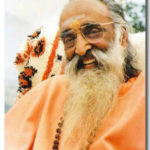Our History
| KRISHNALAYA: CMW HEADQUARTERS | RESPONSIBILITIES | GOALS |
|---|---|---|
| CMW’s headquarters and retreat center called Krishnalaya lies 200 miles north of San Francisco, in Piercy’s serene Redwood country, near the California coast, on the banks of the Eel River (which Pujya Gurudev dubbed as “Eel Ganga”). This first CMW property in USA was purchased in 1979. It consists of a beautiful tract of land and buildings. It serves as CMW’s headquarters and is a retreat center that hosts camps for adults and children. CMW conducted the first and only two-year Vedanta Course outside India at Krishnalaya, 1979-1982. It is here that Pujya Gurudev held his month-long camps on Vivekachudamani and the entire Bhagavad Gita, which was professionally video-recorded in 1991. Over the years, numerous spiritual retreats, Dharma Sevak Courses, and camps for all ages have been conducted here by Pujya Gurudev, Pujya Guruji, and many other CM acharyas. The ashram is ideally suited for such activities and is available to CM centers and visitors throughout the year. | As CMW evolved over the years, Pujya Gurudev Chinmayananda and the CMW Board of Directors redefined CMW’s role to help mold the shape of Chinmaya Mission in North America. CMW would no longer be the sole organizer of yajnas, camps, and other regionally oriented activities. Gurudev gave a clear mandate that CMW’s most important role is to oversee the activities of all Chinmaya Mission® centers in the U.S. CMW is to help groups of devotees begin local activities, form centers, and incorporate. CMW is to ensure that the vision of Chinmaya Mission is kept pure and true to its ideals, and that the policies established by Gurudev are faithfully adhered. CMW’s duties and responsibilities are to coordinate and oversee the activities of all Mission centers in the US. CMW is also responsible for initiating and supervising new national projects and policies for all Mission centers in the US. | CMW’s goals, as stated in its Articles of Incorporation, include the following **To establish and operate Hindu places of worship in the U.S. (including maintenance of CMW’s Headquarters and Retreat Center, Krishnalaya) **To promote, foster, encourage, publish, teach, and disseminate Hindu religion and philosophy, particularly as expressed in the classic principles of Vedanta, as taught by Pujya Gurudev Swami Chinmayananda **To coordinate and oversee all activities of Chinmaya Mission centers in the US, including establishing and operating schools; classes for adults, youth, and children; discussion groups; camps; retreats; workshops; and other related activities that further its specific purposes **To provide natural disaster relief in cash or kind, and medical aid to the poor, indigent, senior citizens, or disabled **To further the translation, publication, and distribution of religious and cultural books, journals, periodicals, audio/video materials, and similar literature |


 His Holiness Swami Chinmayananda, Pujya Gurudev, began teaching the philosophy of the Upanishads in 1951, and for many years, a small band of dedicated workers helped him disseminate the teachings of Vedanta by organizing Gita jnana yajnas, forming Chinmaya Study Groups, and conducting Chinmaya Bala Vihar®s and Yuva Kendras.
His Holiness Swami Chinmayananda, Pujya Gurudev, began teaching the philosophy of the Upanishads in 1951, and for many years, a small band of dedicated workers helped him disseminate the teachings of Vedanta by organizing Gita jnana yajnas, forming Chinmaya Study Groups, and conducting Chinmaya Bala Vihar®s and Yuva Kendras.